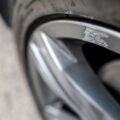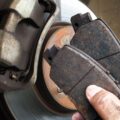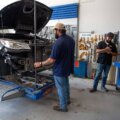OEM vs Aftermarket Parts: What’s Better?
A damaged part puts you in a common situation many drivers face: deciding between OEM vs aftermarket replacements. One promises factory-perfect fit, the other offers potential savings. The choice can affect performance, cost, warranty, and even future resale. Before you commit to one or the other, it helps to understand what really separates the two.
What Are OEM Parts?
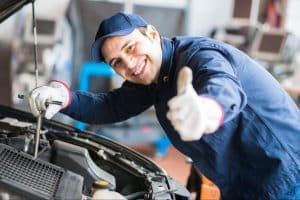
OEM stands for Original Equipment Manufacturer. These parts come from the same company that built the original components in your vehicle. They match the specs, design, and materials of the parts your car had when it left the factory.
If your car is a Toyota, an OEM part will come directly from Toyota or a certified supplier. It will fit just like the original because it is the original.
What Are Aftermarket Parts?
Aftermarket parts are made by companies other than your car’s manufacturer. These parts serve the same purpose as OEM parts, but the materials, designs, and quality can vary. Some aftermarket parts mimic OEM quality, while others cut corners to reduce price.
Shops often offer aftermarket parts as a cost-effective solution. Depending on the part and brand, the result can range from decent to unreliable.
Comparing OEM vs Aftermarket Parts
Let’s break down the most important differences between OEM and aftermarket options.
1. Fit and Compatibility
OEM parts win in fit. They’re made to match your vehicle exactly. Mechanics rarely run into issues installing them.
Aftermarket parts can be hit or miss. Some fit just fine. Others need adjustments or don’t line up perfectly, which can create long-term problems or added labor costs.
2. Quality
OEM parts deliver consistent quality. The carmaker has tested them for performance, safety, and reliability. You know what you’re getting.
Aftermarket parts vary widely. Some top-tier brands make parts as good as or better than OEM. Others use cheaper materials that wear out faster or don’t perform as well.
3. Warranty and Support
Most OEM parts come with a manufacturer’s warranty. If the part fails within the warranty period, you can often get a free replacement.
Aftermarket parts may or may not come with warranties. Some brands back their products, but smaller or off-brand companies might offer no support at all.
4. Price
Aftermarket parts usually cost less. This makes them attractive for drivers on a budget. You can sometimes find an aftermarket part that performs like OEM for a fraction of the cost.
OEM parts carry a premium. You pay for brand reliability, guaranteed fit, and warranty coverage.
5. Availability
You can find aftermarket parts in most auto parts stores and online. They’re widely available and come in a range of prices.
OEM parts may take longer to source. Dealers and authorized service centers stock them, but they might need to order the part, which adds wait time.
Pros and Cons of OEM Parts
Pros
Guaranteed fit and compatibility
Backed by manufacturer’s warranty
Consistent quality and performance
Cons
Higher cost
Limited availability in some cases
Usually sold only through dealers or certified shops
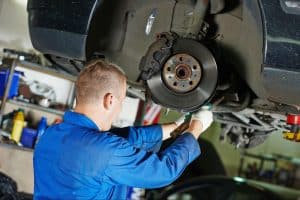
Pros and Cons of Aftermarket Parts
Pros
Lower prices
Wide selection and availability
Some parts may offer better performance
Cons
Quality varies by brand
Fitment issues can happen
May not include warranty
When to Choose OEM Parts
You’re Repairing a Newer Vehicle
If your car is still under warranty, use OEM parts. Mixing in aftermarket parts could void part of the coverage, especially for powertrain or emissions-related systems.
You Want Consistency
OEM parts are consistent. If you value knowing exactly what’s going into your car, choose OEM.
You Plan to Sell or Trade In
Buyers often prefer vehicles repaired with OEM parts. It keeps resale value strong and avoids red flags during inspections.
When Aftermarket Parts Make Sense
You’re on a Tight Budget
Aftermarket parts save money. If you’re making a repair out of pocket, they can be a practical choice.
You’re Replacing Non-Critical Items
For cosmetic parts like mirrors, headlights, or bumpers, aftermarket options often work well. Just make sure to research the brand.
You Want Performance Upgrades
Some aftermarket brands offer performance-focused parts that go beyond OEM specs. Car enthusiasts often use them to boost horsepower, improve handling, or reduce weight.

Questions to Ask Before Choosing
Does the part affect safety?
For brakes, airbags, or suspension parts, quality matters more than price. Stick to OEM or trusted aftermarket brands.
Will insurance cover it?
Some insurance companies prefer aftermarket parts. Others allow OEM parts if your policy includes that option. Ask before agreeing to a repair.
Who’s installing it?
A trusted shop can tell you which aftermarket brands they’ve had success with. A skilled technician may also be able to make small adjustments to help an aftermarket part fit well.
Common Myths About Aftermarket Parts
Myth 1: Aftermarket means low quality
Some aftermarket brands invest heavily in engineering and testing. You’ll find high-performance or heavy-duty parts that outperform OEM.
Myth 2: OEM is always better
OEM works well for reliability, but it isn’t perfect. Some OEM parts come with flaws or recalls. Just because it came from the factory doesn’t mean it’s the best version available.
Myth 3: You can’t use aftermarket parts on a leased car
You can, but you should keep the original parts or check with your lease provider. Using lower-quality aftermarket parts could lead to fees when you return the vehicle.
Final Thoughts
Choosing between OEM and aftermarket parts isn’t always easy. Each has its place in auto repair. OEM parts offer peace of mind, predictable quality, and a better fit. Aftermarket parts offer lower prices and wider availability.
The right choice depends on the repair, your vehicle’s age, your budget, and how long you plan to keep the car. If you’re unsure, ask your technician for a breakdown of both options. A good shop will help you decide without pushing one over the other.
Get Trusted Auto Repairs in the Bronx
Frank & Son Autobody uses both OEM and high-quality aftermarket parts depending on what works best for your car and your budget. We’ve been serving drivers in the Bronx since 1991. Our factory-trained technicians provide accurate assessments and clear recommendations so you feel confident with every repair.
We can help you choose the right parts, walk you through insurance questions, and restore your vehicle with precision.
Contact Frank & Son Autobody for a free estimate today.

